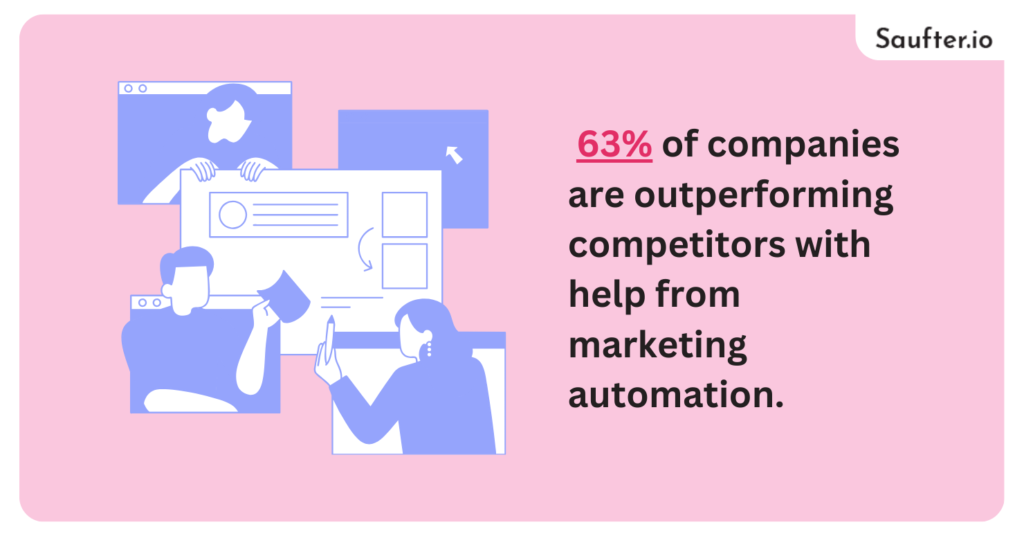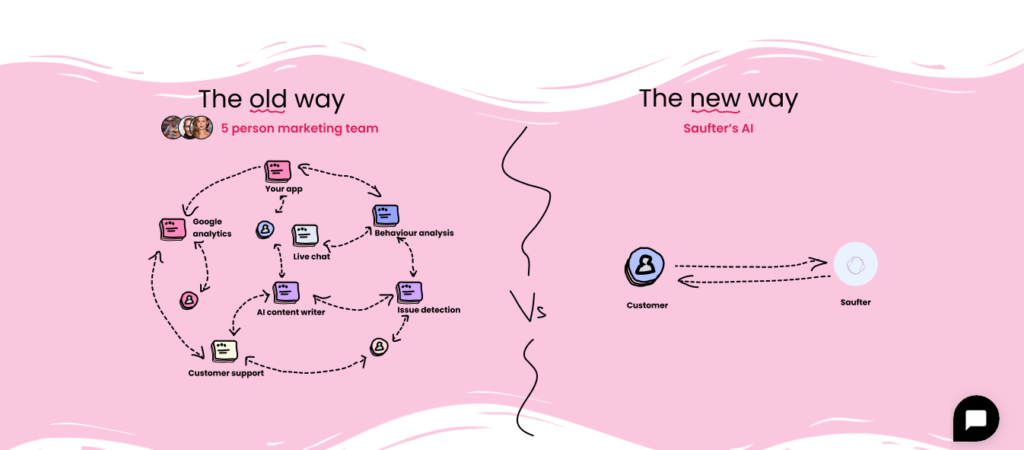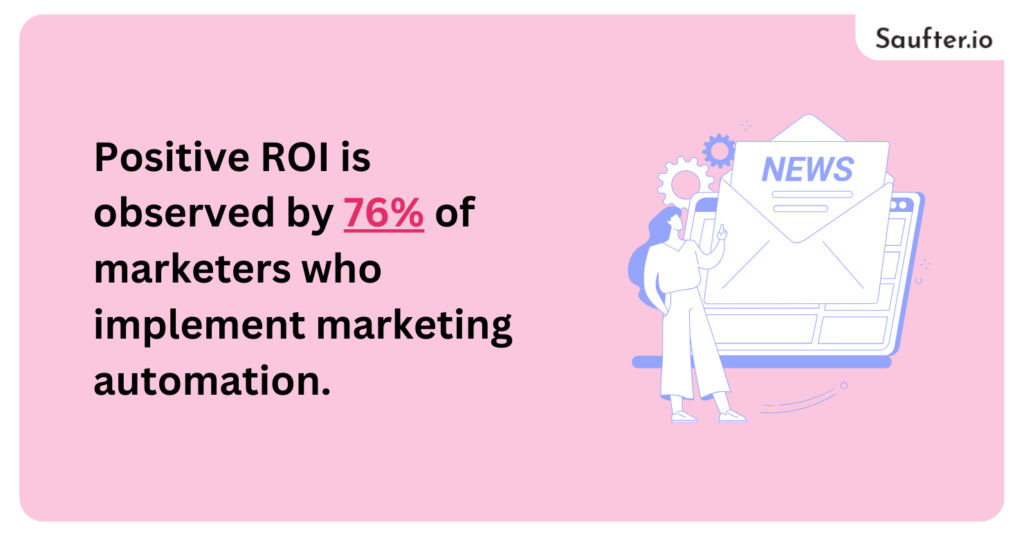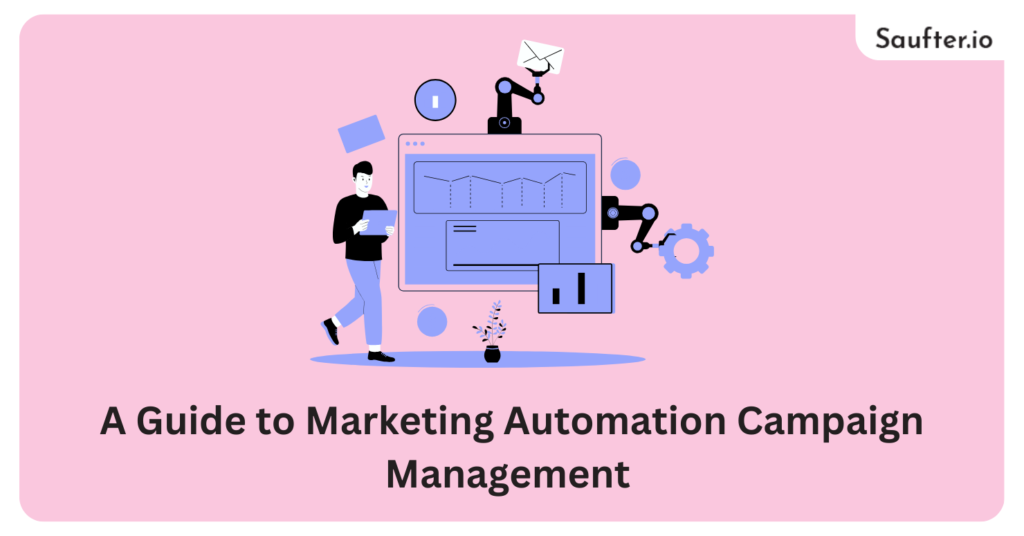Last Updated: November 2025
Marketing automation campaign management is necessary for businesses that want to increase conversions and engage their audience in the current state of the digital ecosystem. Email marketing, in particular, offers a one-of-a-kind opportunity to interact with clients directly by providing them with individualised material that is tailored to their specific requirements and interests. A study shows that 63% of companies are outperforming competitors with help from marketing automation.

The purpose of this article is to explore many areas of email marketing automation and campaign management, with a particular focus on identifying effective best practices and techniques.
How to Understand Marketing Automation
Marketing automation is a technology that makes marketing tasks and processes easier and more streamlined. This lets marketers focus on strategy and creativity instead of doing boring tasks by hand. Several marketing platforms can be used for this automation, but email marketing stands out because it has a direct effect on building relationships and engaging customers.
The Role of Email Marketing in Automation
Using customer data and insights into how people act, email marketing automation lets companies send targeted messages to their audience at the best times.
This approach can make communication more effective and improve the user experience, which ultimately leads to more sales.
- Personalisation: Sending automated emails based on how a user has behaved can greatly raise the number of opens and sales. For instance, when you send welcome emails to new users, they are more likely to interact with your content.
- Segmentation: You can make your ads more relevant by dividing your audience into groups based on demographics or past interactions. This lets you create content that resonates better with certain groups.
- Scheduling: Automation lets companies plan campaigns for the best times, making sure that texts get to users when they’re most likely to respond.
Key Benefits of Email Marketing Automation
Setting up automated email marketing has a number of benefits that can change the way you market:
1. Increased Efficiency
One big benefit of automation is that it cuts down on jobs that need to be done over and over again. Automated processes can do things like send welcome emails, reminders, or follow-ups, so the marketing team can focus on more strategic planning and less on administrative tasks.
2. Enhanced Personalisation
A lot of customisation is possible with automation. By keeping track of how users interact with your site and what they like, you can send them personalised messages that make their experience better. This flexible method can help build stronger relationships and keep customers coming back.
3. Better Analytics and Reporting
It’s easy to keep track of performance measures like open rates, click-through rates, and conversions when you use automated email campaigns. With this data-driven knowledge, marketers can change their strategies in real time, making sure that things keep getting better
4. Scalability
As your business grows, it’s easy to scale up your email marketing with automation. You can reach hundreds or thousands of subscribers, and automated processes will make sure that your messages are consistent and successful no matter how big or small your audience is.
Best Practices for Email Marketing Automation
1. Define Your Goals and Objectives
Before diving into automated campaigns, clearly defining your goals is crucial. Are you aiming to increase sales, improve customer retention, or enhance brand awareness? Having concrete objectives can steer your automation efforts effectively.
2. Understand Your Audience
Gaining insights into your audience’s behaviour and preferences will inform your segmentation and content strategies. Utilise data analytics to assess how customers interact with your brand, which will aid in crafting relevant messages.
3. Create Engaging Content
The foundation of successful email marketing lies in the content itself. Make sure your emails are visually appealing and provide value to the reader. Use compelling subject lines to encourage opens, and make sure your body content is concise and engaging.
4. Test and Optimise
Regularly A/B test different elements of your email campaigns, such as subject lines, visuals, and various call-to-action buttons. Analysing the results will help you refine your strategies and optimise performance.
5. Maintain Good Email Hygiene
Ensure that your email lists are frequently updated. Remove inactive subscribers and non-deliverable addresses to maintain a clean mailing list, which can improve deliverability rates.
6. Customise User Journeys
A successful automation strategy engages users along their different touchpoints. Design workflows that respond to user actions, such as browsing behaviour or past purchases, creating a more tailored experience.
What is Campaign Management in Digital Marketing
In digital marketing, campaign marketing is the planned, carried out, tracked, and evaluation of marketing campaigns that use digital channels to sell goods or services. It is very important to ensure marketing efforts align with business goals and reach the right people. With this all-around method, marketers can plan their campaigns in a way that makes the best use of resources and leads to better results.
Key Elements of Campaign Management
Effective campaign management includes several critical components:
- Goal Setting: Clear and measurable goals are essential. Campaign objectives should align with broader business goals and provide a benchmark for measuring success.
- Audience Segmentation: Understanding the target audience is crucial for tailoring messages and strategies. Proper segmentation enables marketers to create personalised experiences that resonate with specific groups.
- Channel Selection: Choosing the right digital channels—such as social media, email, PPC advertising, and content marketing—is vital in reaching the intended audience.
- Implementation: This involves executing the planned activities, which may include content creation, ad placements, and collaboration with various stakeholders.
During deployment, campaign managers plan different tasks and work with team members to make sure everything goes smoothly.
Benefits of Effective Campaign Management
Successful campaign management provides numerous advantages, including:
- Improved Efficiency: A structured approach ensures that resources are allocated effectively, reducing waste and enhancing productivity.
- Enhanced Collaboration: Campaign management tools often promote collaboration among team members, ensuring transparency and alignment in campaign execution.
- Real-Time Insights: Monitoring campaigns in real-time provides valuable insights that can help marketers pivot strategies quickly in response to performance data.
Tools and Techniques
To streamline campaign management, marketers often utilise specialised software and tools. These include:
- Campaign Management Software: This software facilitates the planning, execution, monitoring, and analysis of campaigns, ensuring that all team members are aligned and that tasks are completed on time.
- Digital Marketing KPIs: Key performance indicators (KPIs) must be established to measure success and make data-driven decisions. Metrics may include conversion rates, ROI, and engagement levels across channels.
- Testing and Optimisation: Continuous testing, such as A/B testing, is pivotal to improving campaign performance. Analysing results allows marketers to adjust strategies for better outcomes.
Using campaign management tools makes this process even better by letting you track and analyse campaign success in real-time. It is possible to change strategies based on data-driven results because this tracking gives you information that lets you make smart optimisations.
In a nutshell, what is campaign management in digital marketing is essential for making marketing campaigns that get results for your business and keep customers interested.
Challenges in Marketing Automation Campaign
Despite its advantages, marketing automation can present several challenges. One major challenge is the risk of generating generic content that lacks personalisation. This common pitfall can hinder customer engagement and satisfaction.
Additionally, poor data quality—such as duplicated or outdated information—can adversely affect the performance of automated campaigns, leading to wasted resources and effort.
- Another potential obstacle is the lack of proper training among team members, which can lead to ineffective use of automation tools and missed opportunities.
- Companies must invest in training and development to ensure that their staff can leverage the full capabilities of marketing automation platforms effectively.
Lastly, navigating data privacy regulations is crucial to avoid compliance issues that can arise from mishandling customer data.
Marketing Automation Campaign Examples
Marketing automation campaigns use technology to simplify marketing chores, therefore guaranteeing efficiency and effectiveness in reaching target markets. The corporate objectives, client contacts, and available channels will all affect the variation in these efforts. The following are several instances of successful marketing automation initiatives:
1. Welcome Series Emails
A new subscriber joining your mailing list or registering an account sets off an automated welcome email series. Usually, this run consists of:
- Introduction: A synopsis of the values and goals of the business
- Product data: Emphasise important goods or services the potential subscriber would find appealing.
- Links to well-known blog entries or social media sites will help to increase interaction.
Establishing a good first impression that helps to build the relationship with the new subscriber comes first.
2. Reminders About Abandoned Cart
Emails sent automatically to consumers who add products to their shopping cart but do not finish the purchase are abandoned cart emails.
- Product Images: Visually striking depictions of the goods left in the cart for these reminders.
- Coupons or discounts are incentives meant to help complete the purchase.
- Phrases like “limited supply available” help to create urgency and inspire quick response.
So this campaign is vital.
3. Birthday Promotions
Implementing birthday marketing campaigns involves sending personalised emails to customers when their birthday approaches. The campaign typically includes:
- Personalised Greetings: A warm birthday message from the brand.
- Exclusive Offers: Gifts or discounts to celebrate the occasion, encouraging customers to make a purchase.
These campaigns are effective in enhancing customer loyalty and engagement, as they leverage personalisation to foster a deeper emotional connection with the brand.
4. Lead Nurturing Campaigns
For B2B companies, lead nurturing is essential in guiding potential customers through the buying process. These campaigns often include:
- Educational Content: Sending informative resources (like whitepapers or ebooks) that address the needs and pain points of the leads.
- Follow-Up Emails: Timely check-ins to provide additional information or support as leads progress through their buyer’s journey.
This approach positions the brand as a supportive partner, ultimately increasing trust and the likelihood of conversion.
5. Re-Engagement Campaigns
Re-engagement campaigns target customers who have not interacted with the brand for an extended period. Techniques in these campaigns may include:
- “We Miss You” Emails: Friendly reminders encouraging customers to return, often with a special offer to incentivise re-engagement.
- Feedback Requests: Surveys asking for input to better understand why the customer disengaged and how the brand can improve.
- These campaigns aim to rekindle interest and retain customers who may be on the verge of becoming inactive.
Marketing automation campaigns are valuable tools for improving efficiency and enhancing customer experiences. By implementing strategies such as welcome series, abandoned cart reminders, birthday promotions, lead nurturing, and re-engagement campaigns, businesses can effectively reach and communicate with their customers. With the right approach, these automated campaigns can lead to increased customer loyalty, higher conversion rates, and overall improved business performance.
Saufter: A Leading Email Marketing Automation Software

In order to provide campaign-related recommendations, Saufter automatically detects your user activity on your portal or website and your users’ travel phases. This is a device that facilitates consumer engagement and email marketing. A how-to-article may be provided by the application to a user who has never previously utilised a specific feature.
You are sent a fully-drafted email and in-app campaign on a weekly basis; all you need to do is approve it. In addition, it analyses your competitors’ blogs to determine the topics they have recently written about and subsequently suggests content campaigns from this information.
- Automation of the segmentation of user behaviour into cohorts.
- Email marketing recommendations that are automated to increase conversion rates and reduce attrition.
- Provide automatic referrals for search engine optimisation campaigns.
- Predict customer churn and conversion.
By using Saufter, businesses can leverage powerful email marketing automation features to enhance their campaign management processes, leading to increased engagement and improved overall results.
Conclusion

Effective marketing automation campaign management is vital for any business looking to enhance its email marketing strategy. With the right tools, such as Saufter, marketers can automate repetitive tasks, improve segmentation, personalise content, and ultimately drive better results. Positive ROI is observed by 76% of marketers who implement marketing automation within a year.
















